Visit one of Washington States most spectacular coastal parks.
Fort Casey is on popular Whidbey Island in Washington State, and can be reached by bridge or ferry.
Drive across the Deception Pass Bridge at the north end of Whidbey Island, or take the 20 minute ferry from Mukilteo just north of Seattle, to the south end of Whidbey Island (check schedule).
You can purchase a Discover Pass at the visitor center at Fort Casey's entrance.
There are no kiosks or restaurants at Fort Casey, so you'll need to drive to the nearest town, Coupeville, for refreshments.
10 best things to do at Fort Casey
.jpg)
1. Climb to the top of the stunning Admiralty Head Lighthouse.
The Admiralty Head Lighthouse is the centerpiece of Fort Casey State Park, and is open for self-guided tours during spring and summer. Walk up the 30 foot spiral staircase to the lantern room, or view the excellent exhibits and gift shop in the lower rooms. Check lighthouse open hours here.
.jpg)
2. Discover how the Admiralty Head Lighthouse lost its lantern tower in 1927!
The Admiralty Head Lighthouse was operational from 1903 to 1922, and replaced a smaller wooden structure constructed in 1861. The attached living quarters were considered quite generous at the time, with three bedrooms upstairs, a living quarters downstairs, and thick 18-inch walls.
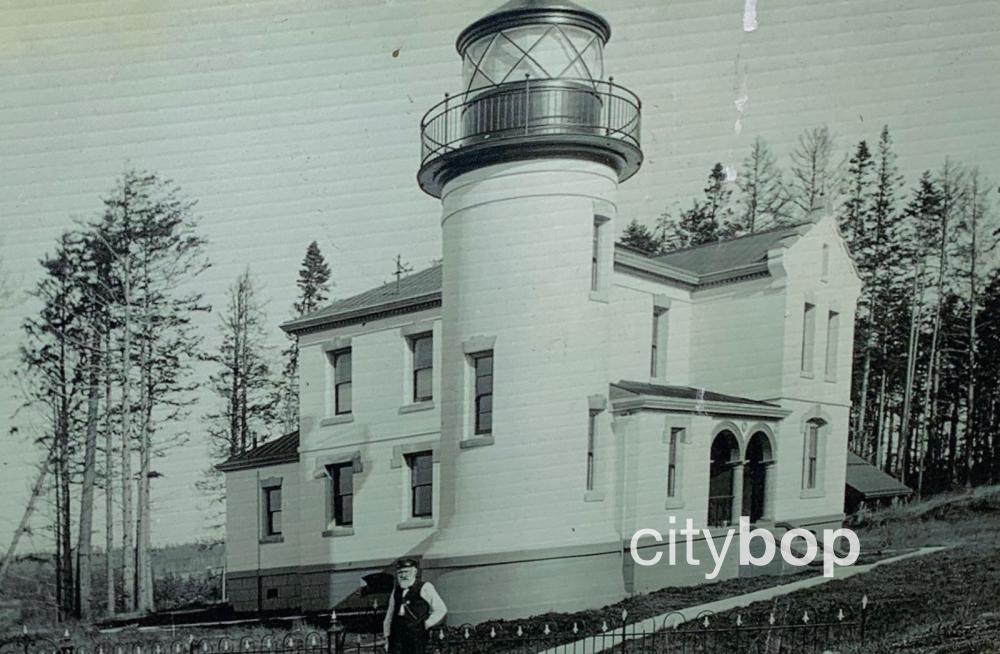
This is Keeper Captain Davis standing outside the Admiralty Head Lighthouse at Fort Casey in 1905, who maintained the light until 1918 when he passed away at age 81.
Four years after Keeper Davis' death, the Admiralty Head Lighthouse was abandoned in 1922 when shipping lanes changed. The lantern tower was removed in 1927 and placed on the New Dungeness Lighthouse.
Admiralty Head Lighthouse remained vacant until WWII, when it became a sleeping quarters for soldiers who were patrolling the nearby beaches, and was painted olive green for camouflage. The once elegant lighthouse was now a shell of its former self, a lopsided structure missing a lantern tower.
After WWII it fell into serious decline, until Washington State Parks took over Fort Casey in 1956 and completely restored it. The new tower is not original, but is a perfect replica of the first version. The red roof on the living quarters, and black top of the lighthouse are true to its original colors.
3. See a photo of the original Red Bluff Lighthouse that was demolished.
The earlier Red Bluff Lighthouse at Fort Casey operated from 1861 to 1903, just south of Battery Kingsbury where the main gun line is. The lighthouse was situated atop a Cape Cod style building, with a square shaped tower. The first lighthouse keeper was a retired sea captain, by the name of William Robertson, who lived at this lighthouse with his wife and five children.
However, by the 1890's the construction of a military defense system was deemed a priority, so the Red Bluff Lighthouse was demolished to make way for a battery, and a new lighthouse was constructed at the northern end of Fort Casey where you see it today.
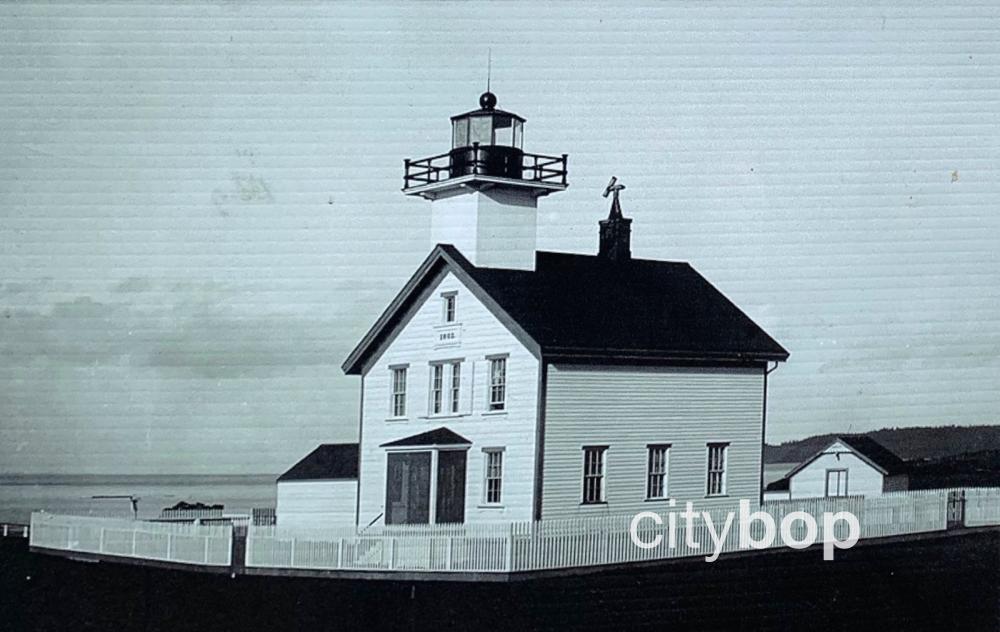
4. Walk down to the breathtaking beach at Fort Casey.
It's a fifteen minute walk to get from the parking lot at Fort Casey, down to the beach area.
The bluff at Fort Casey overlooks the spectacular Admiralty Inlet, with the majestic snow-capped Olympic Mountains as a superb backdrop. Take in these breathtaking views while strolling along the grassy trails along the bluff, then follow the path down to the beach.
On a warm summer's day, many people choose to bring an umbrella and picnic, and hang out on the beach. However, it's not suitable for swimming due to rip tides and currents. The waters around Fort Casey are also very cold
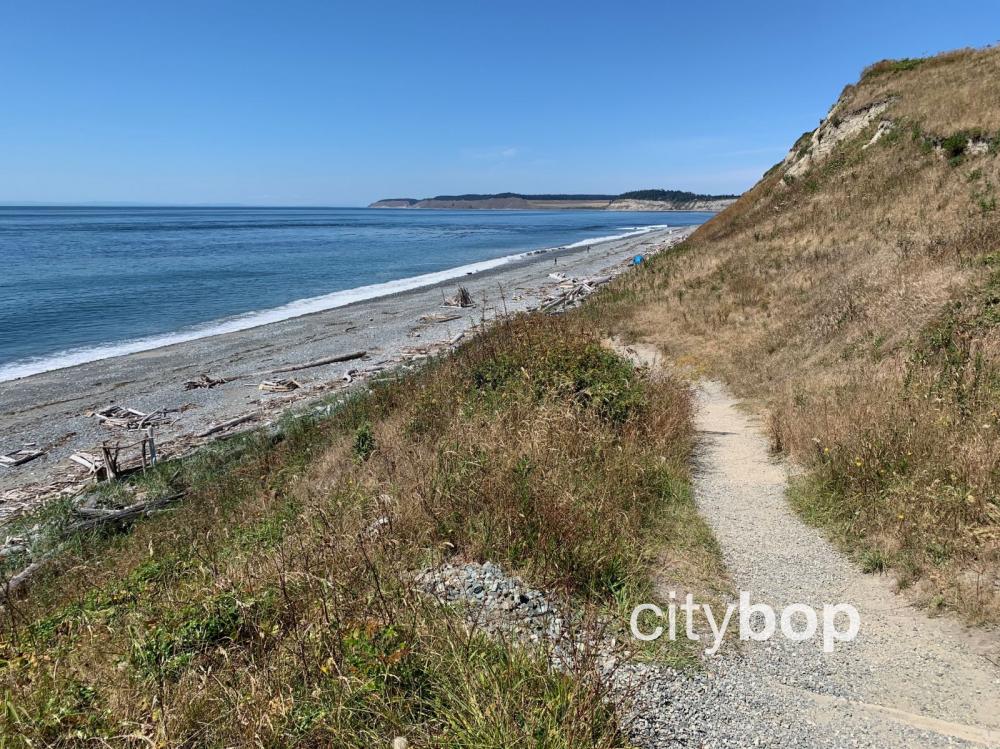
5. Look out across the water to Fort Worden.
Can you see Fort Worden across Admiralty Inlet, on the finger of land jutting out to the right?
It was part of the Triangle of Fire at the entrance of Puget Sound, guarding downstream towns like Seattle, and the shipbuilding port of Bremerton. No shots were ever fired by the U.S. Army, outside of training sessions. To keep costs down, the U.S. Army only tested the guns at Fort Casey at full capacity, once a year.
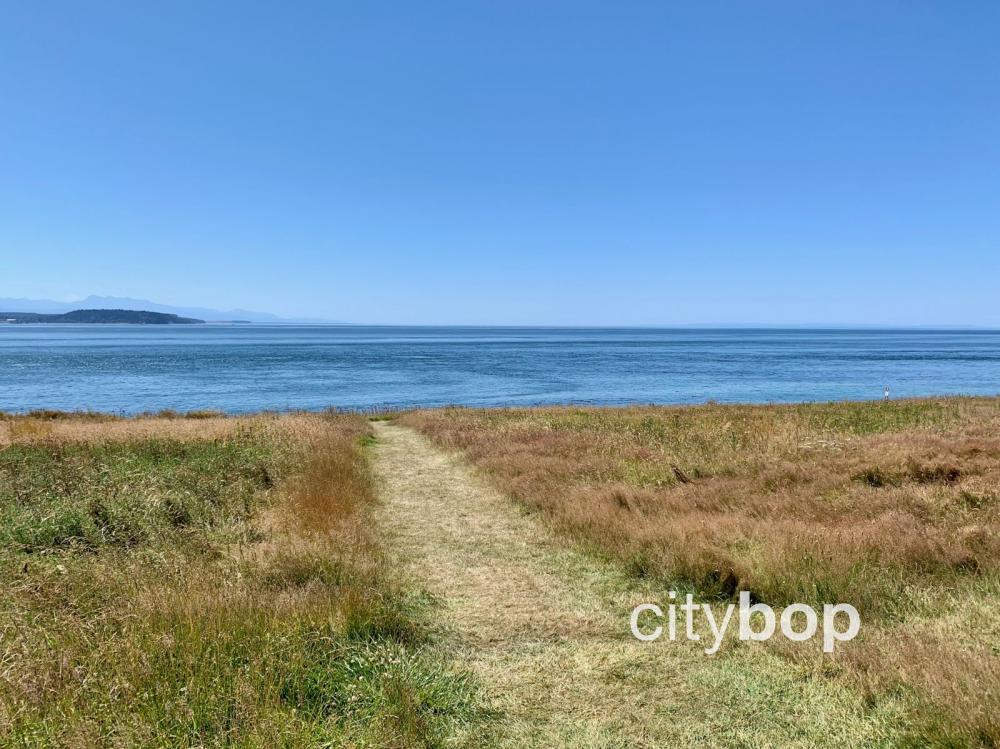
6. Watch ferries make the 35 minute crossing to Port Townsend.
The ferry travels from Keystone on the southeast border of Fort Casey, to charming Port Townsend in the Olympic Peninsula (check schedules). This is a great shortcut to get to the spectacular Olympic Peninsula, without the hassle of a three hour drive around Puget Sound.
Port Townsend is another historic, seafaring town, with a lovely main street full of 1890s buildings, and is also the gateway to incredible attractions at the Olympic Peninsula, like Hurricane Ridge.

7. Look north up the coast to historic Ebey's Landing, the first land grant on the island.
The flat prairie at Ebey's Landing is visible in the distance, and is another tourist site worth visiting near Fort Casey.
Pioneer Isaac Ebey took the first land grant on Whidbey Island in 1850, claiming 604 acres under the Donation Land Claim Act. The prairie was perfect for farming, with rich, fertile soil, and no need for exhaustive tree felling. Ebey was convinced he had landed in paradise, and encouraged his extended family to move to Whidbey Island. Unfortunately he met his demise in 1857 when he was beheaded by Haida Indians, in revenge for the killing of an Indian Chief by American forces.
Today you can take a 1.5 mile hike from Ebey's Landing up to his log cabin, and see the blockhouse that his wife and children retreated to when the attack occurred. They survived the attack, but soon vacated the property.
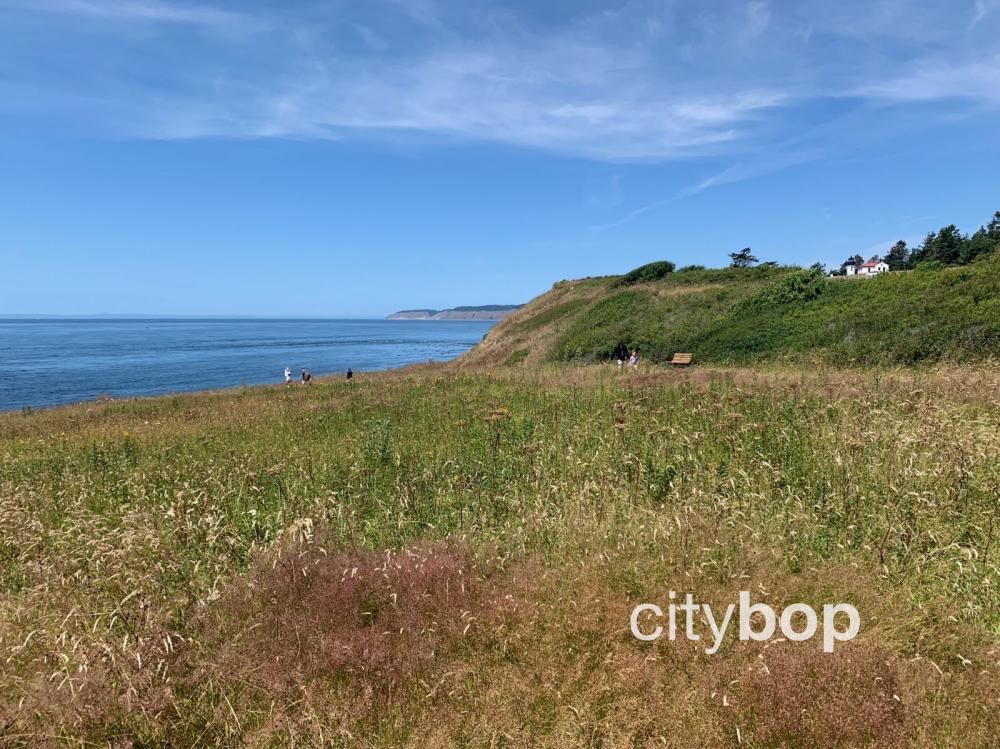
8. Bring a flashlight and climb staircases, towers and tunnels at Fort Casey.
The military bunkers on the bluffs at Fort Casey are a big hit with visitors, with plenty of staircases, towers and tunnels to explore. Don't forget to bring your flashlight. This is a great day out for kids, who can't get enough of these sprawling bunkers.
.jpg)
The 130 year old concrete batteries are remarkably well preserved.
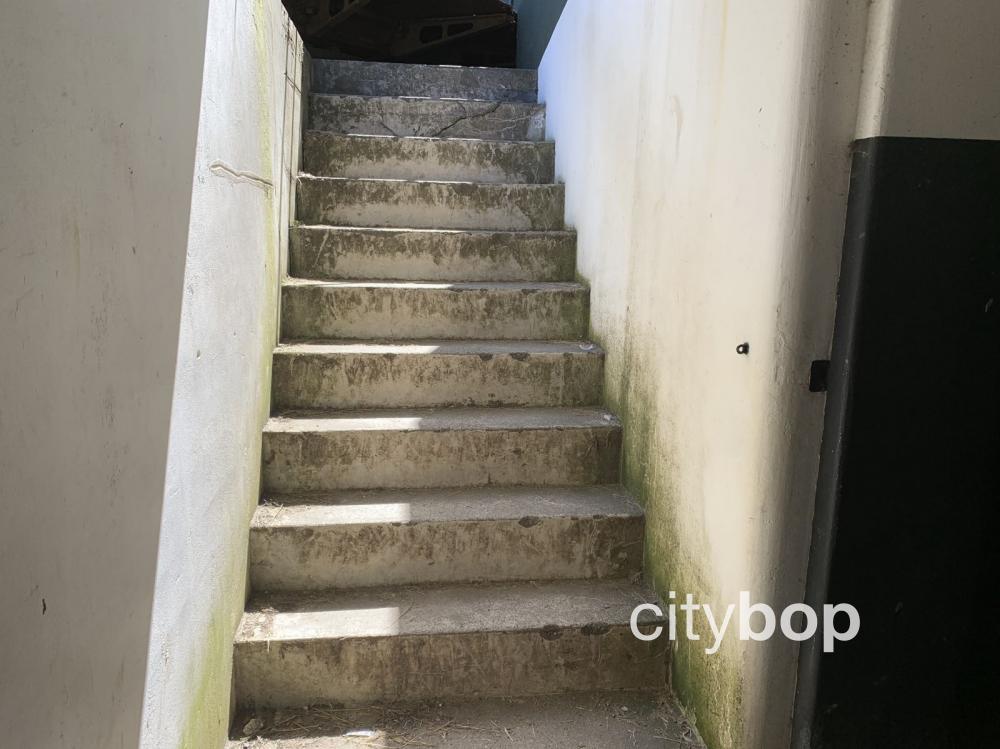
There are so many sets of stairs to explore at Fort Casey, with an exciting discovery at the end of each one.
.jpg)
The imagination runs wild here, as you ponder what all these secret rooms and tunnels were once used for at Fort Casey.
9. Explore five batteries at the main gun line at Fort Casey.
The first three batteries were built in the 1890s to protect the entrance to Puget Sound (Battery Worth, Moore and Kingsbury). The idea was that any enemy ship entering Admiralty Inlet would be hit by fire from three different angles in a Triangle of Fire, formed by Fort Casey, Fort Worden and Fort Flagler.
The last two batteries were built in the early 1900's (Battery Valleau and Trevor).
.png)
10. Look down the barrel of a gun that could blast through 4 inch steel on warships!
Battery Worth has an authentic 10 inch gun mounted on a disappearing carriage. This meant that the gun could be hidden, until it was ready for use. These guns could fire projectiles at 1,544 miles an hour, and penetrate the 4 inch thick steel on warships.
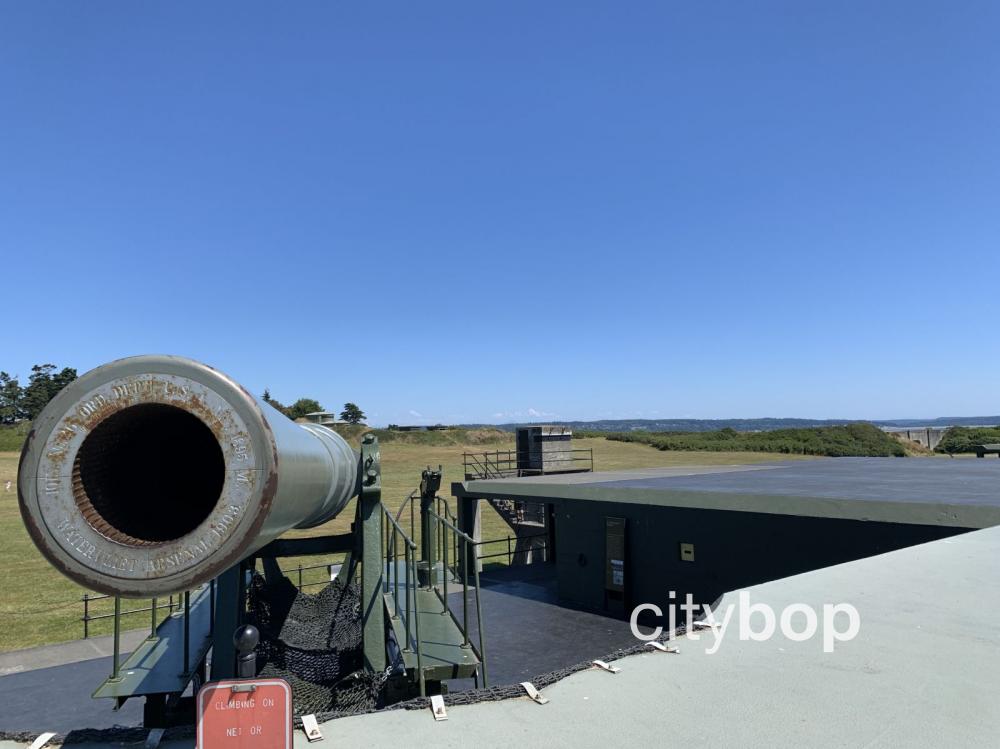
It's a thrilling sensation looking down the barrel of one of these 10 inch antique guns in the firing position at Fort Casey. The 10 inch measurement refers to the diameter of the interior of the gun's barrel or caliber. There are only four guns like this left in the entire world, and two of these are at Fort Casey.

The guns were removed from Fort Casey and went missing. Two identical guns were located in 1956 in a jungle in Fort Wint in the Philippines, and then delivered to Fort Casey in 1968.
.jpg)
Here's some soldiers hard at work during a training session at Fort Casey, preparing to load the gun.
6. Explore the complex network of 10 rooms under the guns.
There was a network of 10 rooms under the guns, manned by 100 soldiers.
The rooms were a support system for operating the two ten-inch guns above, and included the plotting room, powder room, oil room, tool room, store room, shell room, powder room, hoist rooms, storage battery room and shot gallery.
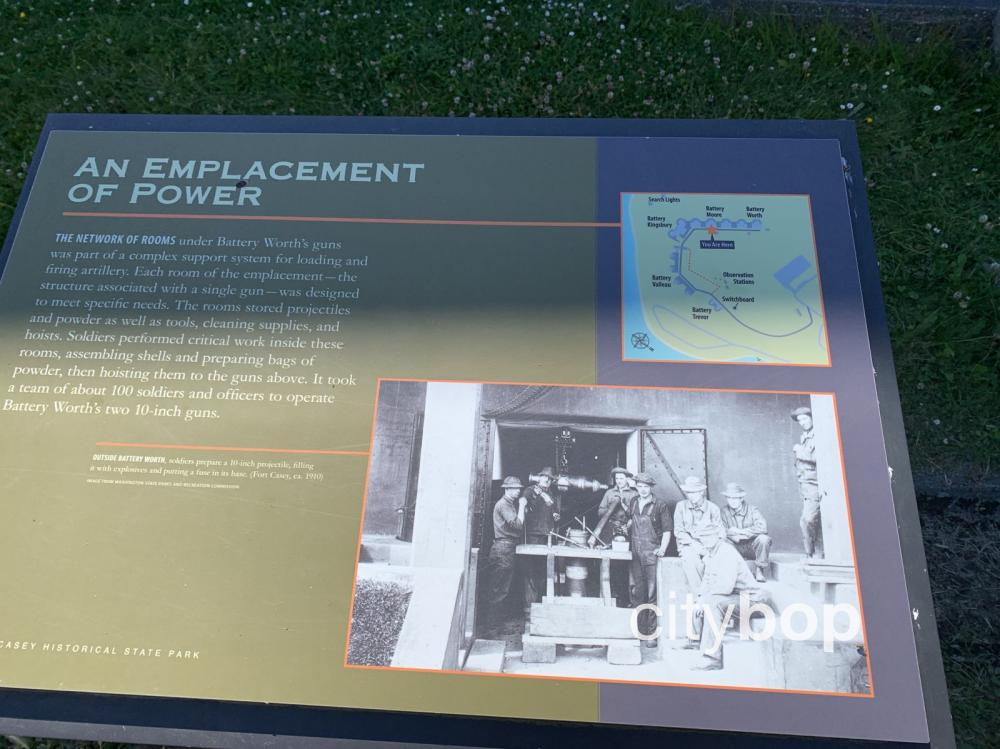
Take a closer look at the photo above, where soldiers are filling a 10-inch projectile with explosives. These heavy explosives were hoisted up from the magazine room below, to the main firing area.
11. See the speaking tubes that soldiers used to communicate with each other.
Soldiers devised an ingenious communication system within each battery at Fort Casey, by talking into metal speaking tubes. They initiated a call by blowing into a brass mouthpiece, which sounded a whistle at the other end and raised a metal flag to get attention.
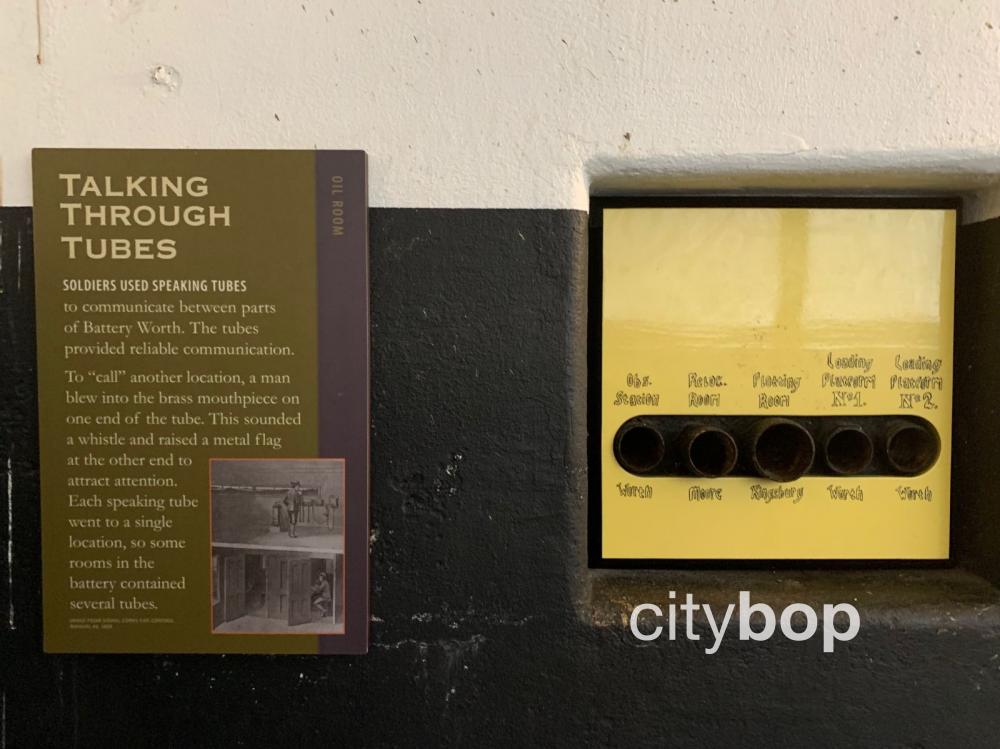
12. Step inside a cool Plot Room, where all the strategy happened!
Each battery at Fort Casey had a plotting room, where key information on the enemy position was crunched, to come up with a set of co-ordinates to fire on enemy ships. This room served as the entire brains of the operation, and was where all the strategy happened.
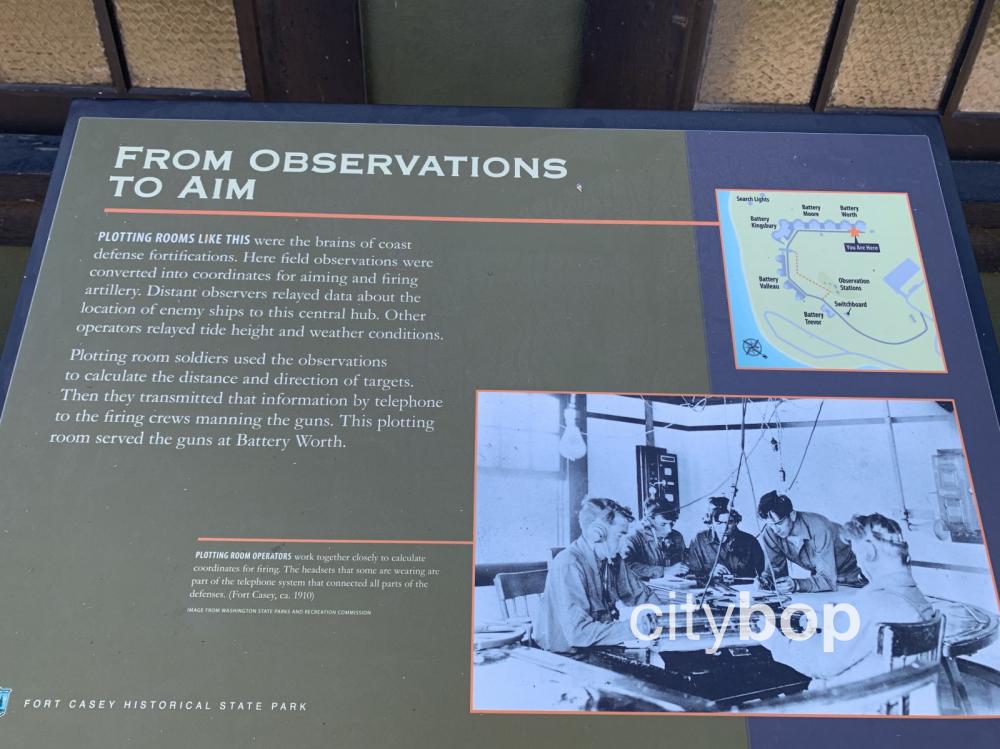
The decaying concrete walls in this Plotting Room have a certain beauty, and the eye is drawn to the profusion of colors from the rust colored stains.

The old military fortress at Fort Casey is like a giant sculpture. Eventually it will be reclaimed by the elements, but not for many years. Keep in mind that ancient Roman structures made from concrete are still standing after a thousand years.
13. See where the ammunition was stored in the Shot Room.
This is the shot storage room at Battery Worth at Fort Casey, where ammunition was stored to fire at warships.

14. Check out the Tool Room where everything was meticulously cleaned.
Tools and equipment were kept in this room at Fort Casey. The guns and mortar had to be continually serviced and cleaned. It was long and tedious work, but everything had to work perfectly. Can you imagine how cold it was inside these rooms in the dead of winter?
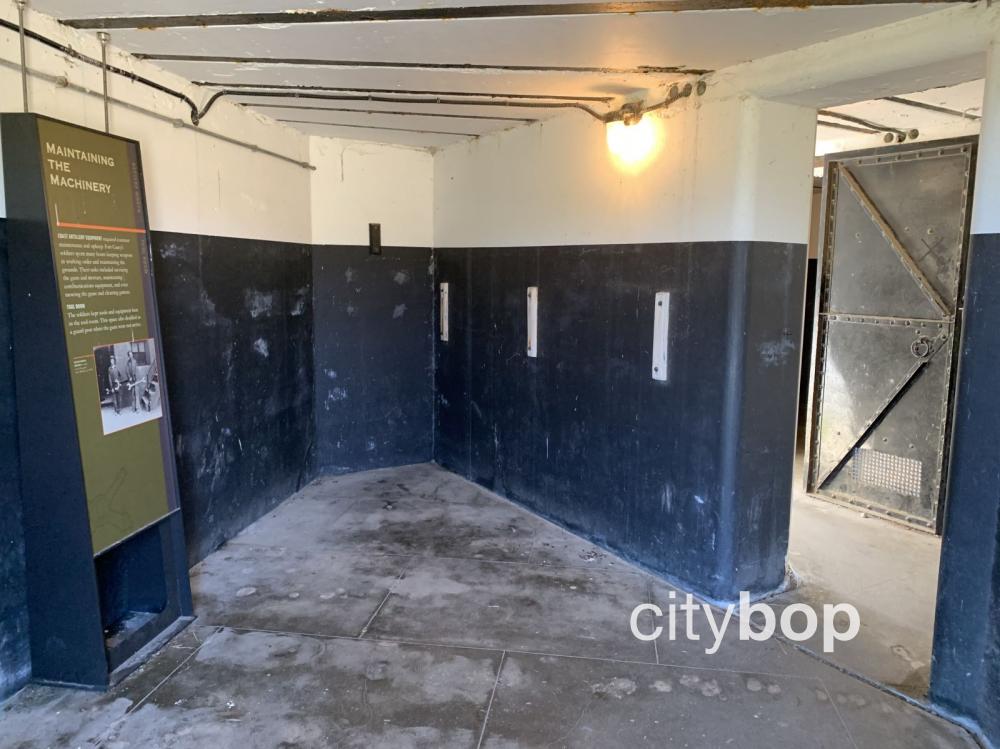
15. Explore the Hoist Rooms where projecticles were 'hoisted' to the gun battery above.
.jpg)
These are the hoist rooms in Battery Worth at Fort Casey, where 617 pound projectiles were hoisted to the gun battery above. Each projectile had two 81 pound powder bags.
.jpg)
This diagram shows how shots, shells and powder were raised from the hoist rooms to the gun battery above, by a pulley system.
16. Stop by the Shell Room.
Shells were organized by soldiers in the shell room at Fort Casey.
.jpg)
17. Learn how the Powder Room had orange clay tiles to keep the ammunition dry.
.jpg)
18. Explore the four squat observation towers used to detect enemy ships.
These four short, squat towers away from the main battery are observation posts, designed to detect enemy activity on the water by using telescopes.

Military Commanders were originally stationed here, but felt isolated from the main gun line. Therefore, in 1915 two tall observation towers were built behind the main gunline at Fort Casey about 300 feet away. Plotting rooms were assigned, so the Commanders could be closer to the action.
.jpg)
19. Climb to the top of the two observation towers at the gun line.
This is one of the two new observation towers built in 1915 at Fort Casey, so the Commanders could relocate to the main gun line.
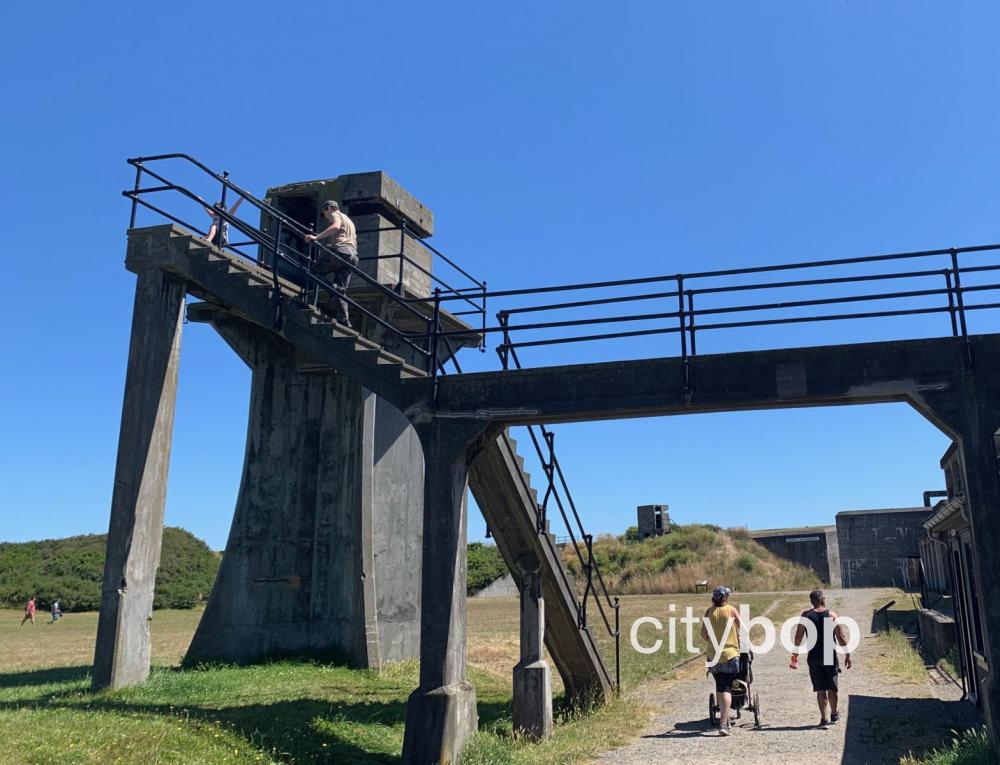
Visitors love to climb the stairs and peek through the peephole.
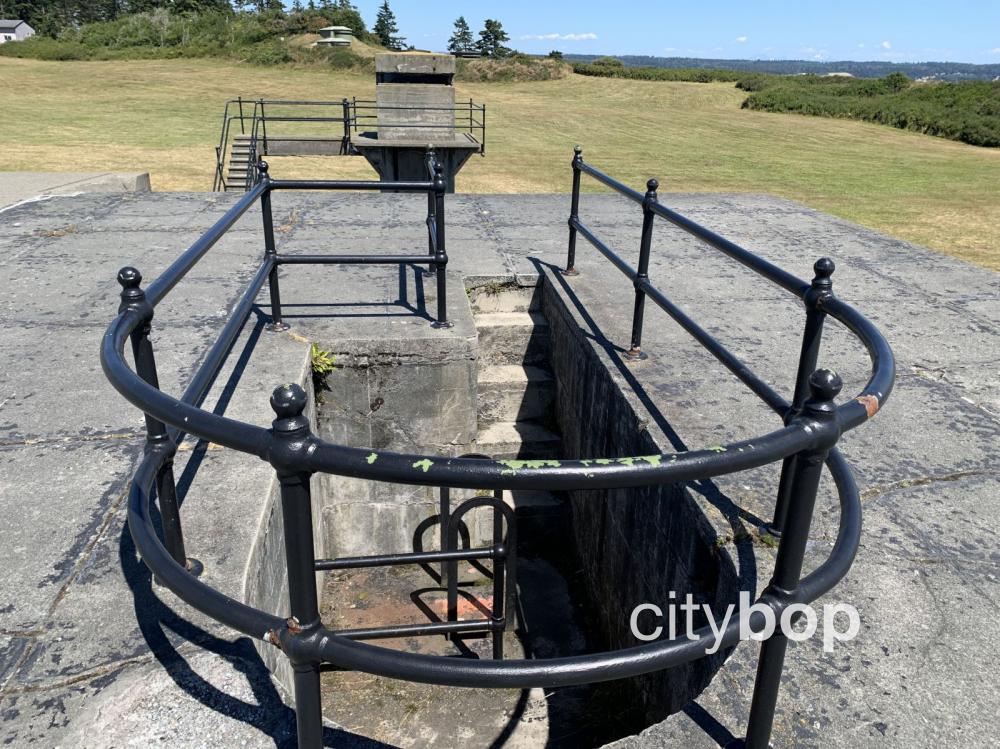
This is another perspective of the new observation towers built in 1915 at Fort Casey. You can see the old, squat observation towers on the hillside in the background. These older observation towers were more low slung, and harder to detect by eye.
20. Learn about the powerful searchlights used to spot enemy ships.
Fort Casey had powerful spotlights that could be rolled out to illuminate enemy ships. These were especially important for detecting enemy ships under the cloak of darkness at night. The famous Triangle of Fire (Fort Casey, Fort Flagler and Fort Worden) could focus three spotlights on an enemy ship at the same time.
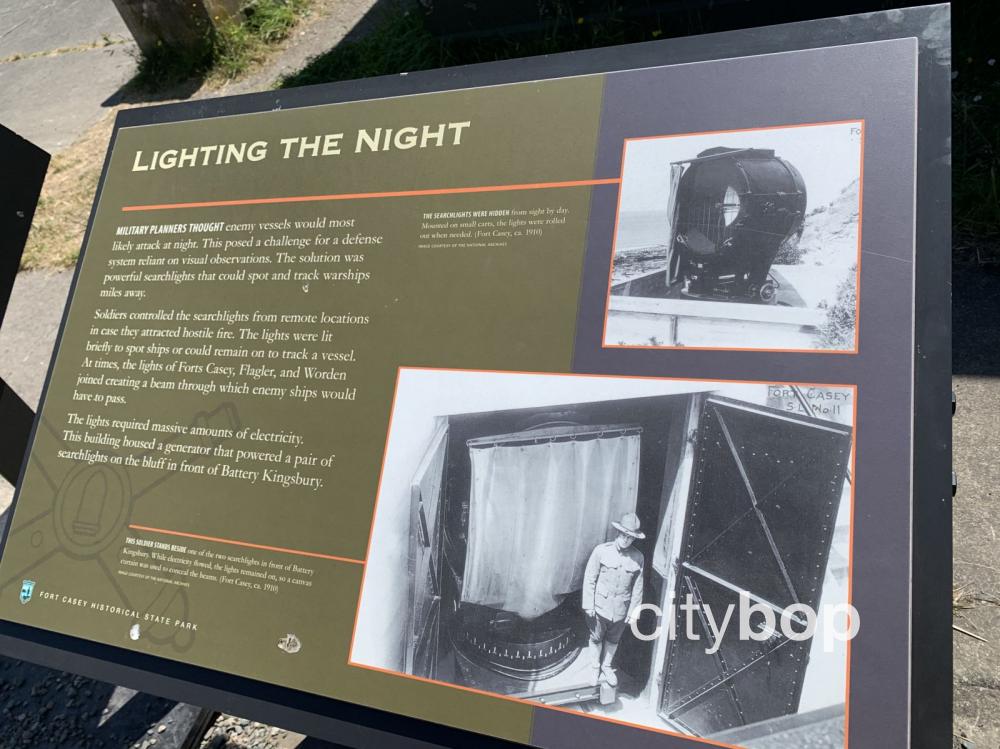
21. Pass through the tunnel from the main gun line at Fort Casey, to reach Battery Trevor and Battery Valleau.
.jpg)
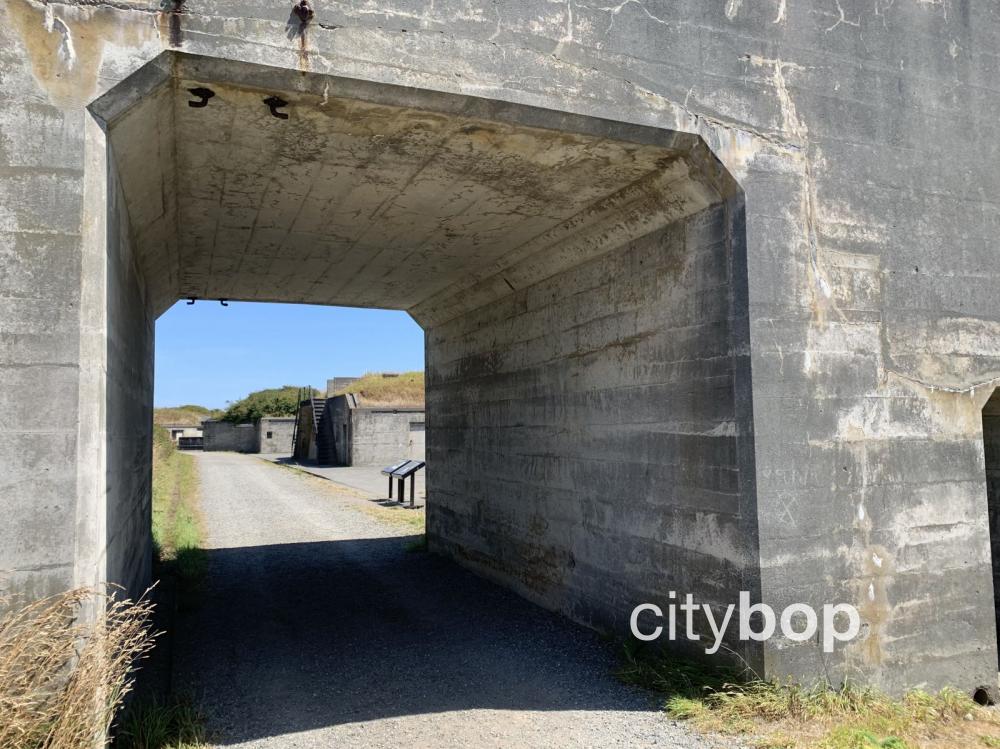
22. Explore the Battery Valleau and Battery Trevor, and see how they look different from the older batteries.
Battery Trevor (1905) and Battery Valleau (1907) were completed years later than the other batteries at Fort Casey constructed in the 1890s. They look different from the earlier multi-story batteries at Fort Casey like Worth, Moore and Kingsbury, and have a more compact design, eliminating the need for complex hoisting systems.
.jpg)
Battery Valleau (1907) was one of the last batteries built at Fort Casey.
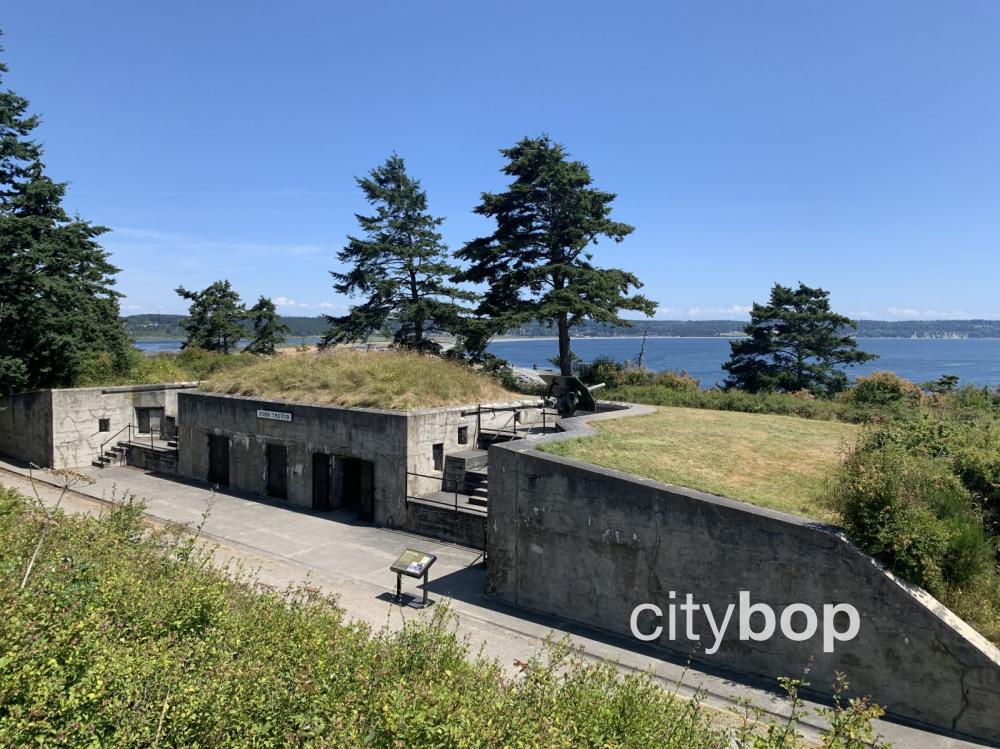
This is Battery Trevor at Fort Casey, with a 3 inch display gun mounted. Can you see how it has a more short, squat structure than the older 1890s batteries like Battery Worth? This battery would be impossible to detect from the water.
.jpg)
Step inside Battery Trevor.
.jpg)
23. Take the stairs in-front of the main gun line, down to the beach.
The stairs would've provided easy access for soldiers to the beach, in the event an enemy ship landed down here.
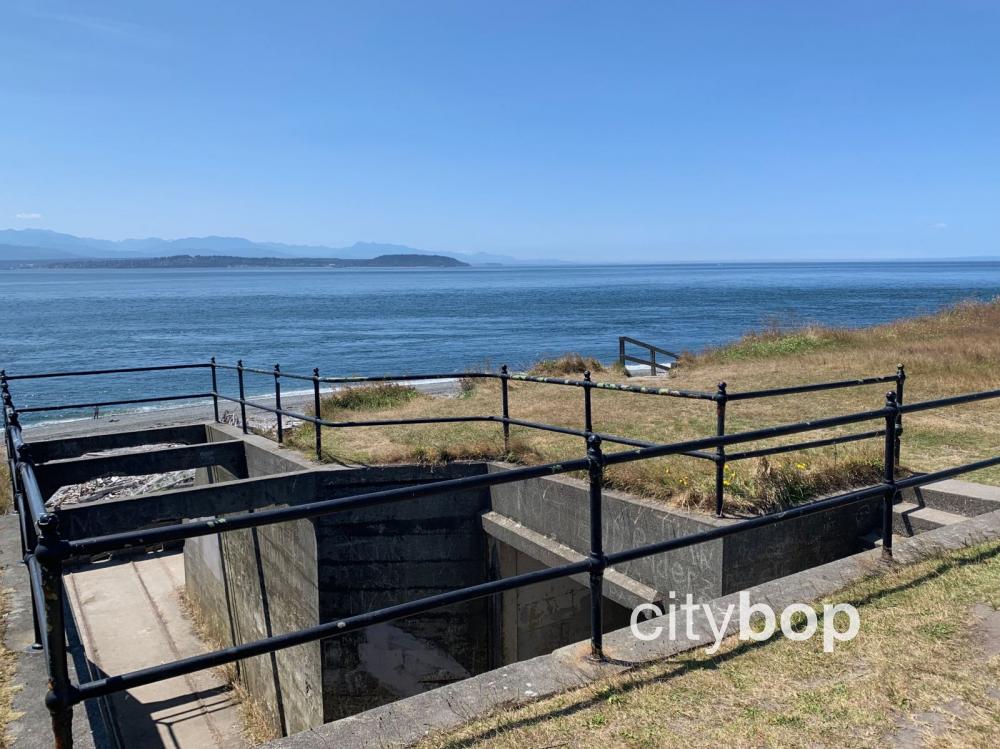
24. Picnic or bike at Fort Casey, and let your dog run around.
Fort Casey is a popular destination for picnics. There is a plentiful supply of picnic tables, or you could just sit on a picnic blanket in the grassed area, and soak in the magnificent views. A restroom is conveniently located next to the main parking lot.
Dogs are permitted on-leash.
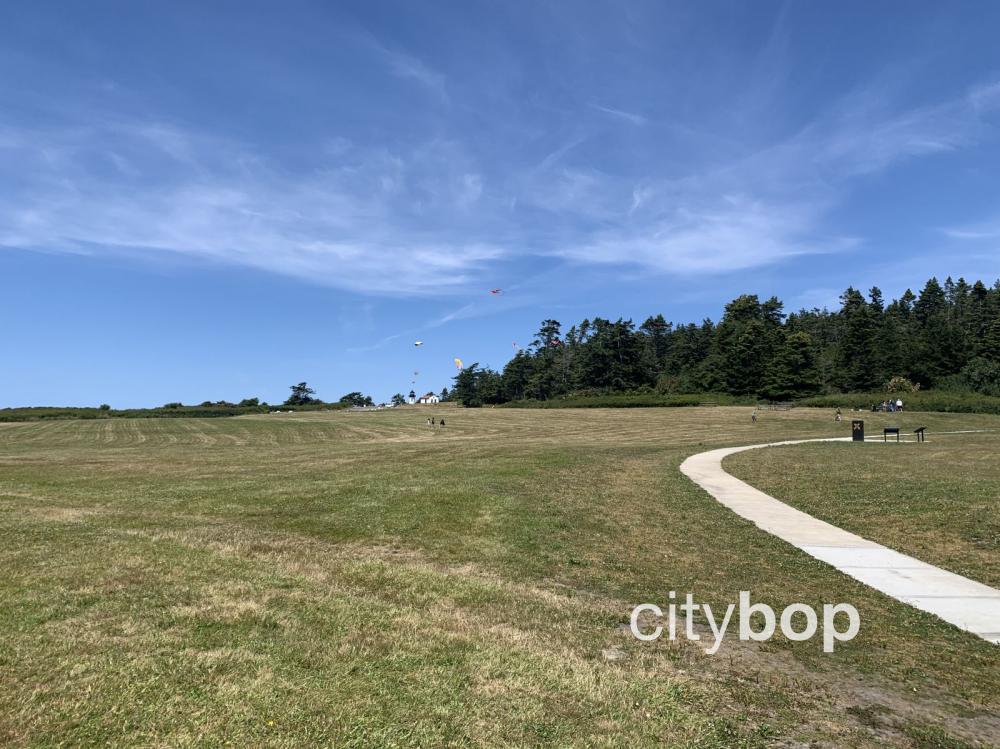
25. Attend the Kite Festival in September, and see a spectacular ascension!
Fort Casey's skies are often full of colorful kites. Kite flying is a serious business here, and there's even a Whidbey Island Kite Festival here in September. An ascension happens on consecutive days of this festival, which basically means that everyone flies their kite at the same time. What an incredible sight, watching hundreds of kites soar above the Admiralty Head Lighthouse and Fort Casey military fortress.
.jpg)
26. Stay at the historic Officers' Quarters.
Seattle Pacific University owns the Fort Casey Inn for vacation rentals, and Camp Casey for larger groups. These fill up quickly, so book early.
The charming Fort Casey Inn has a historic row of Non Commissioned Officers' Quarters cottages constructed in 1909, available as vacation rentals. The two bedroom Officers' Quarters are part of a duplex, therefore share a wall, and have distant views of Crockett Lake.
The historic Camp Casey is designed for larger groups, popular with sporting leagues, church groups and scouts, with bunk houses, dorms, and private houses for rent. The bunkrooms are in the army barracks in large open rooms, whereas the dorms accommodate smaller groups. The private houses include the Quartermaster's Building, and the Alumni House West duplex in an 1890s Officers' Quarters. The Alumni House West has some authentic original features, like tin pressed ceilings, ornate fireplaces, and a wrap around porch. This would be the perfect choice for a family reunion.

The Colonel's House (pictured above) is used by Seattle Pacific University for their own private retreats. This is the prettiest building at Camp Casey. There are tours of the Colonel's House, but these happen very infrequently. This beautiful, Victorian building was constructed in the 1890s, and is in excellent condition. It has an imposing presence on the bluff, overlooking the military fortress beneath it. The Commissioned Officers always had the best dwellings, reflective of their superior rank. You can see even more example of Commissioned Officers quarters at Fort Worden and Fort Flagler, across the water. They are also available for rent
27. Camp on the lovely waterfront at Fort Casey.
Fort Casey also has a campsite with waterfront views, near the ferry terminal to Port Townsend.
28. Stay overnight at Coupeville and Langley, then drive out to Fort Casey.
If you'd prefer to stay overnight in a township, then you can't go wrong with lovely Coupeville or Langley. Coupeville is only 15 minutes drive away, and is much closer to Fort Casey than Langley, but both are great towns, with lots of restaurants and shops along beautifully preserved main streets.
29. Learn about the "Triangle of Fire" at the small museum at the Admiralty Head Lighthouse.
This is a map of the famous Triangle of Fire that protected the entrance to Puget Sound, and downstream cities like Seattle and the naval shipbuilding yard of Bremerton. The ring was composed of Fort Casey (at Admiralty Head), Fort Worden (at Point Wilson), and Fort Flagler (at Marrowstone Point).
Construction of the concrete gun emplacements started at Fort Casey in 1897, and the first soldiers arrived in 1899.
By World War I, coastal defense fortifications like Fort Casey were viewed as outdated, as battles moved to the air and ocean. By 1921 Fort Casey was downgraded to a training center.
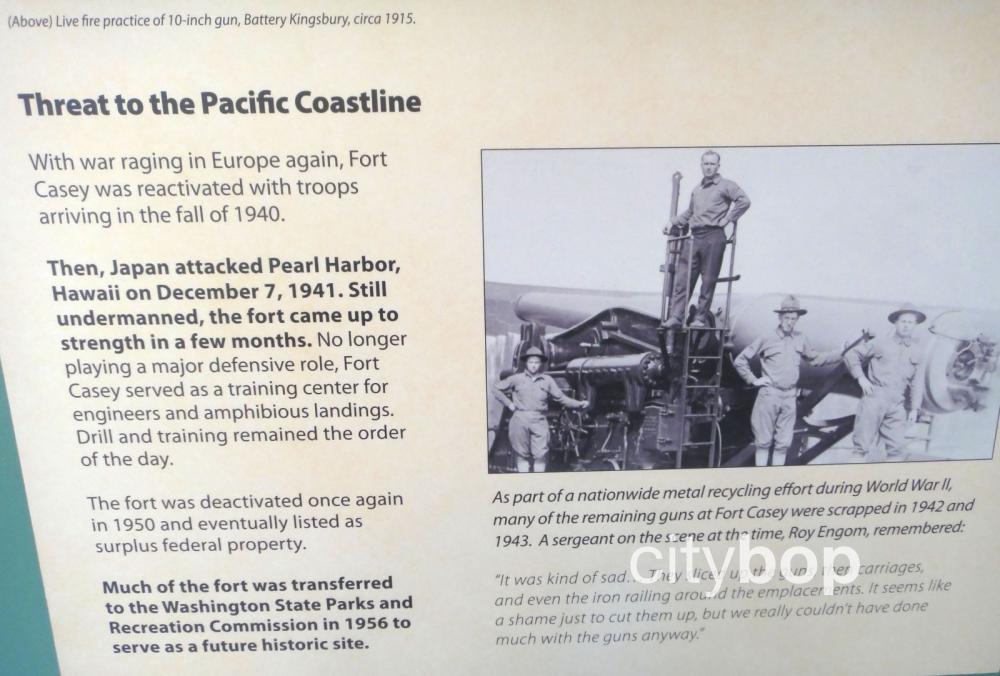
In WWII Fort Casey served as a training center for engineers and soldiers, but was deactivated in 1950 and transferred to Washington State Parks in 1956.
30. Find fun things to do near Fort Casey.
There are so many fabulous attractions within a close drive of Fort Casey.
Fort Ebey is directly north of Fort Casey, and has an incredible setting on a surf beach. The parking lot is just a short distance from the beach, so there's no hike in. The water isn't safe for swimming, but it's fun watching the dozens of surfers ride the popular surf break. It's also a great place to hang out on a warmer day, with gorgeous vistas of the Olympic Mountains. If you're feeling energetic you can take the 1-mile bluff walk to a military battery.
The Lavender Wind Farm is a ten minute drive from Fort Casey, and has a sweeping coastal views. Wander through fields of lavender, with a fun labyrinth, pond, and gazebo. Pay to u-pick some lavender, or stop by the small store to purchase goods, like lavender ice-cream, cookies, oils, sprays and more.
Ebey's Landing is due north of Fort Casey, and also has some great hikes. This site has huge historical significance, and you can check out the location of the log cabin from the first permanent settler on Whidbey Island, Isaac Ebey. Isaac Ebey relocated to Whidbey Island along from the Oregon Trail from the mid-west, and claimed a free land grant in 1850. Unfortunately he was shot then beheaded by Native Indians in 1957, in retaliation for one of their Chiefs being killed by American forces. His family hid out in the blockhouse next to the cabin, and managed to survive. Today you can do a 1.5 mile hike from the beach at Ebey's Landing, up to the log cabin and blockhouse. There's also a longer 3.5 mile hike that follows the ridgeline along the bluff, then returns along the beach.
The charming seaport town of Coupeville is a 15-minute drive from Fort Casey. There's a lot of lodging options to stay overnight, and it has a historic main street with shops and restaurants. The town was founded in 1852 by sea captains and farmers, and many of the original buildings are intact. Walk out along the Coupeville Wharf built in 1905, or visit the excellent Island County Historical Museum at the entrance of the wharf.
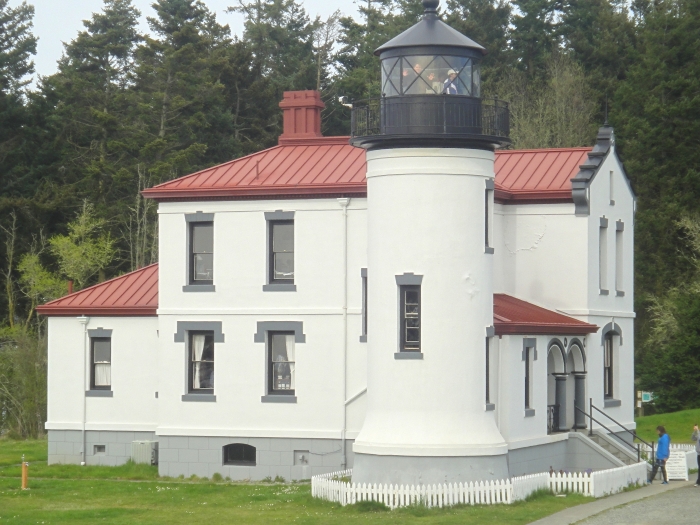
Review this attraction